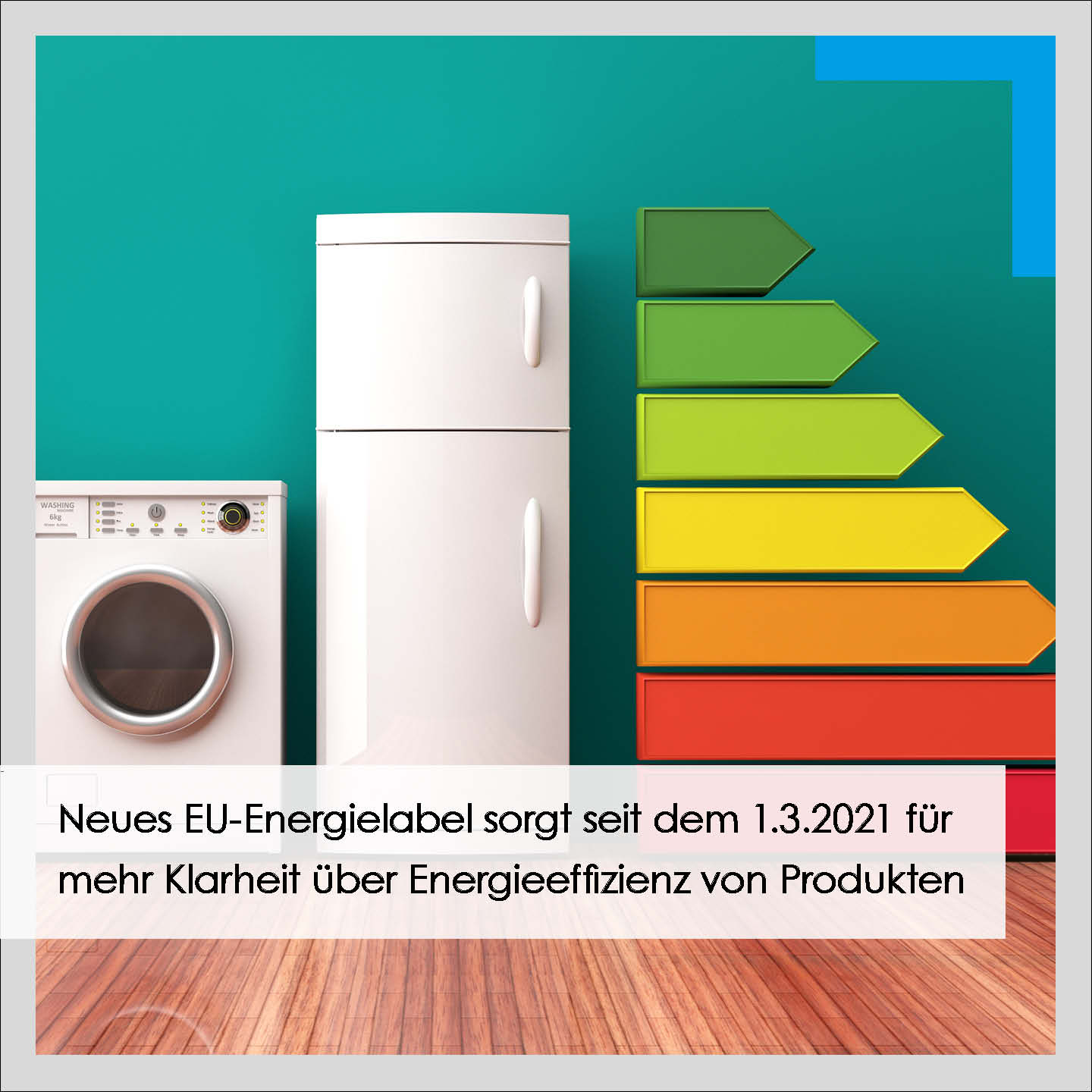

New EU energy label provides more clarity on energy efficiency of products since 1 March 2021
Previously common indications of the energy efficiency of electrical appliances such as A+++, A++ and A+ to D will be gradually converted to an efficiency scale from A to G for the first product groups from 1 March 2021. In addition, the new labels provide supplementary information on the energy consumption and properties of new appliances via comprehensible pictograms and consumers can obtain further information via QR codes.
The new label enables more transparent product comparisons and facilitates the decision for the most energy-efficient product. As a result, considerable energy and thus electricity cost savings are possible and, in the new version, serves as an effective tool for climate protection.
In the first step, large household appliances such as refrigerators and freezers, dishwashers, washing machines and dryers, but also televisions and displays are affected by the change. From 1 May 2021, the new labels will also be mandatory for tyres, and from September 2021 also for lamps. Other product groups requiring labelling will be adapted step by step until 2030.
The new label regulation in combination with new energy efficiency requirements of the Ecodesign Directive are expected to save around 167 terawatt hours of electricity annually by 2030. This corresponds to the annual energy consumption of Denmark.
Due to improvements in the energy efficiency of new appliances, many of them fall into the upper efficiency classes, so that a redesign was necessary here to enable comparability in product selection again. A new distribution key for the label distributes the existing appliances evenly across the scale, whereby the top class is to be kept as free as possible for the time being as an incentive for further improvements.
In addition to the classification into a class, simple pictograms should provide additional product information such as volume, capacity or water consumption. Additional product information can also be accessed via a QR code, which, for example for refrigerators, provides technical data such as the dimensions, type and volume of the cooling compartments or the minimum guarantee from the EPREL database. Suppliers of appliances in the EU for which an energy label is required have had to register their products in a database there since January 2019 before they can sell them in the EU.
Learn more about our work and projects and follow us: ![]()
![]()
![]()
![]()
#mullandpartner #engineeringforabettertomorrow #energyefficiency #powersaving

